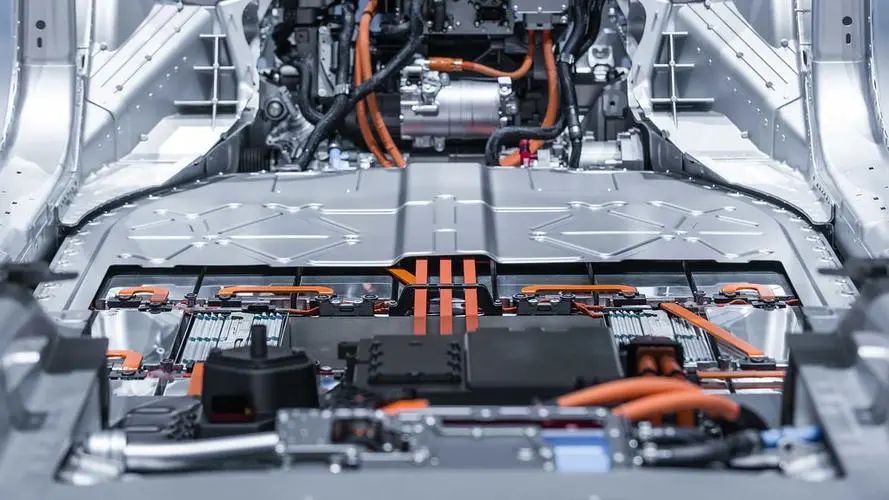Electric Vehicle Power Lithium Battery Tank Market Development Factors Analysis
Thursday,28 Mar,2024
The electric vehicle industry has experienced explosive growth in recent years and is expected to expand further by 2024. As electric vehicles are gaining popularity across the globe, the demand for lithium-ion battery packs that power these vehicles is also increasing. The key component of a lithium-ion battery pack is the metal canister that houses each lithium-ion battery cell. This market segment is known as power lithium battery cans and is becoming a key area of focus for automakers and the battery supply chain.
What are the key drivers influencing the lithium power battery market for electric vehicles? Several factors are driving the strong growth expected in 2024 and beyond.

The global transition from internal combustion engines to electric and hybrid powertrains is well underway. Automakers are investing significant R&D budgets to electrify their model lineups in response to increasingly stringent emission regulations and changing consumer preferences. This broad electrification push means an exponential increase in demand for high-capacity, long-range battery packs and the battery canisters needed to house each lithium-ion cell.
A top priority for automakers is to increase battery energy density in order to extend the range of electric vehicles without increasing the size/weight of the battery pack. This is driving the adoption of new battery chemistries such as lithium nickel manganese cobalt (NMC) and lithium iron phosphate (LFP), which require robust, high-performance battery cans. Manufacturers are also innovating can materials such as aluminum to maximize energy density in the same physical space.
Early prototypes of next-generation solid-state batteries promise significant advances in energy density and safety. Although still in the development stage, their commercialization will generate demand for new anode-free, high-precision solid-state battery cans. This emerging technology has significant implications for the long-term market development of lithium power batteries.
Every gram of weight added to a battery pack affects vehicle range and efficiency. As a result, battery can manufacturers are designing lighter aluminum-based designs to help automakers reduce overall packaging costs. Lightweighting trends will remain a central focus to support mass market adoption of electric vehicles.
Battery thermal management is critical to performance and safety. Advanced battery tank designs are increasingly incorporating complex cooling channels, thermal interface materials and other solutions. This provides opportunities for suppliers with expertise in thermal technologies.
Organizations such as the Battery Association and SAE are working to develop global standards for key battery pack components, including battery canisters. Widespread adoption of performance standards will help streamline global manufacturing and assembly, benefiting can suppliers.
The power lithium battery market is well positioned for strong growth given the strong push to support widespread electrification. Key players are innovating can materials, formats, cooling technologies, and manufacturing processes to meet the evolving needs of automakers. The lithium-ion battery and can supply chain is entering a period of massive expansion with the growth of vehicle electrification.
What are the key drivers influencing the lithium power battery market for electric vehicles? Several factors are driving the strong growth expected in 2024 and beyond.

The global transition from internal combustion engines to electric and hybrid powertrains is well underway. Automakers are investing significant R&D budgets to electrify their model lineups in response to increasingly stringent emission regulations and changing consumer preferences. This broad electrification push means an exponential increase in demand for high-capacity, long-range battery packs and the battery canisters needed to house each lithium-ion cell.
A top priority for automakers is to increase battery energy density in order to extend the range of electric vehicles without increasing the size/weight of the battery pack. This is driving the adoption of new battery chemistries such as lithium nickel manganese cobalt (NMC) and lithium iron phosphate (LFP), which require robust, high-performance battery cans. Manufacturers are also innovating can materials such as aluminum to maximize energy density in the same physical space.
Early prototypes of next-generation solid-state batteries promise significant advances in energy density and safety. Although still in the development stage, their commercialization will generate demand for new anode-free, high-precision solid-state battery cans. This emerging technology has significant implications for the long-term market development of lithium power batteries.
Every gram of weight added to a battery pack affects vehicle range and efficiency. As a result, battery can manufacturers are designing lighter aluminum-based designs to help automakers reduce overall packaging costs. Lightweighting trends will remain a central focus to support mass market adoption of electric vehicles.
Battery thermal management is critical to performance and safety. Advanced battery tank designs are increasingly incorporating complex cooling channels, thermal interface materials and other solutions. This provides opportunities for suppliers with expertise in thermal technologies.
Organizations such as the Battery Association and SAE are working to develop global standards for key battery pack components, including battery canisters. Widespread adoption of performance standards will help streamline global manufacturing and assembly, benefiting can suppliers.
The power lithium battery market is well positioned for strong growth given the strong push to support widespread electrification. Key players are innovating can materials, formats, cooling technologies, and manufacturing processes to meet the evolving needs of automakers. The lithium-ion battery and can supply chain is entering a period of massive expansion with the growth of vehicle electrification.

